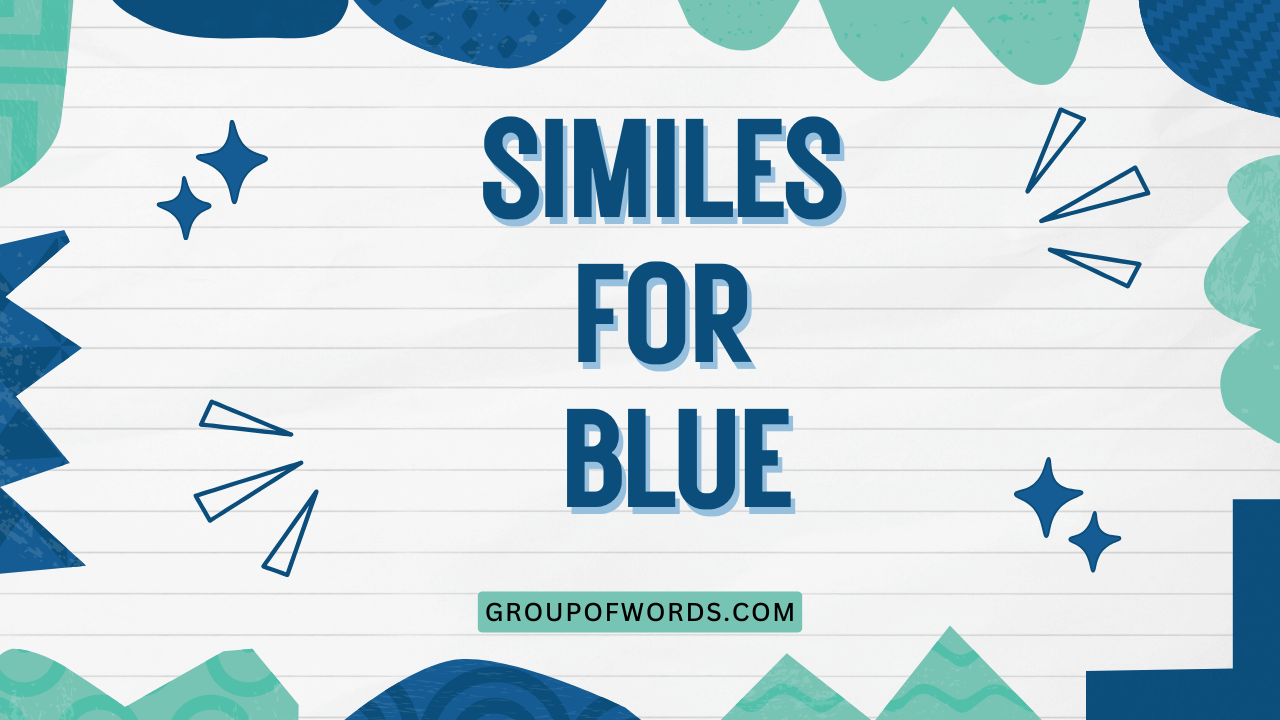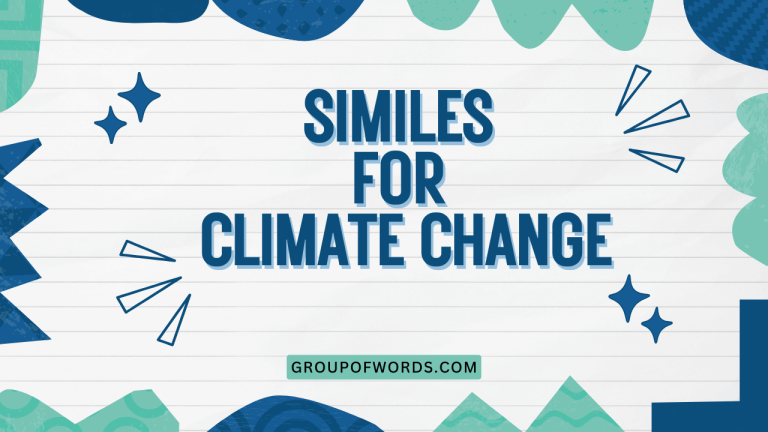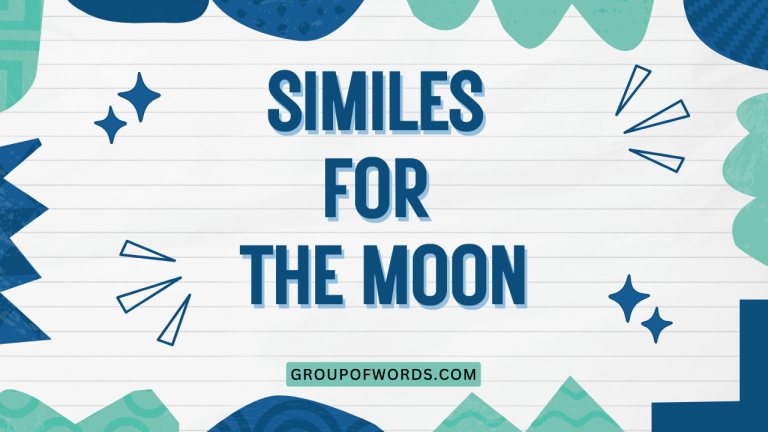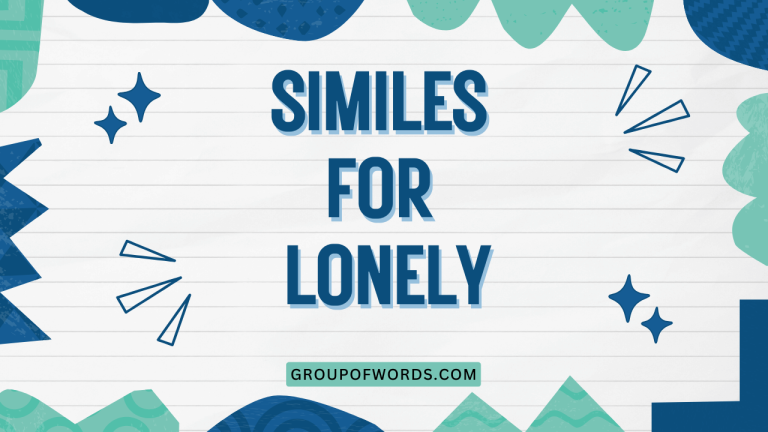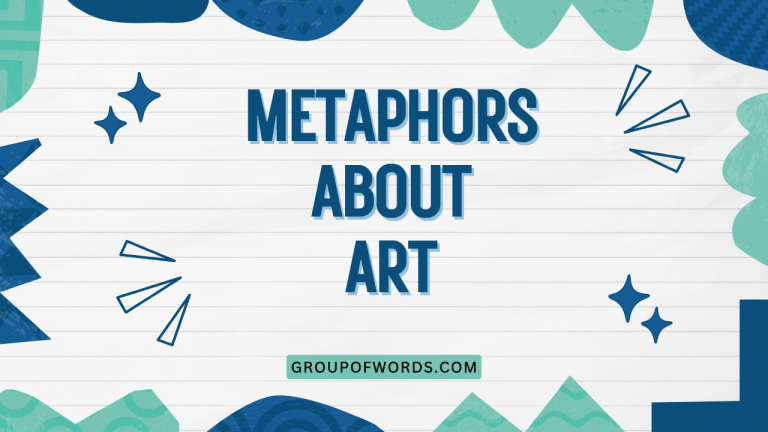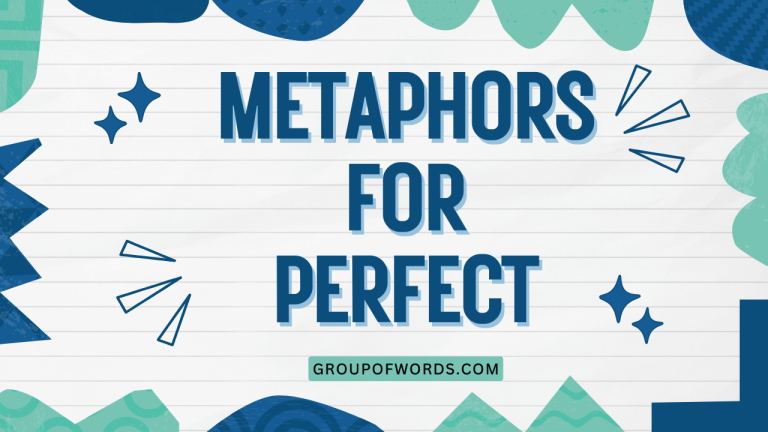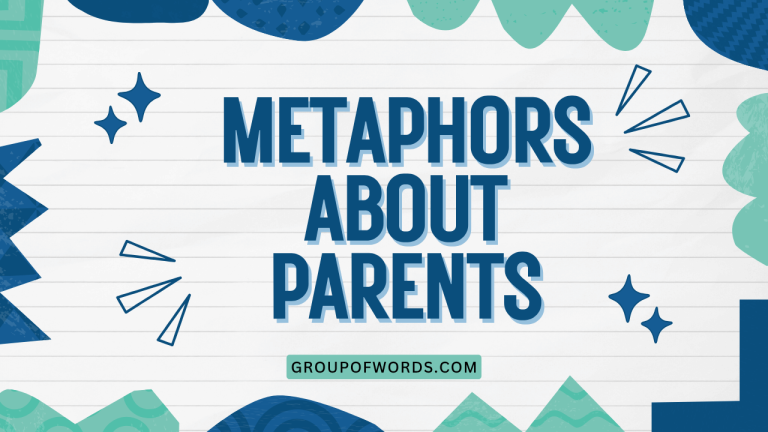Similes for Blue: A Comprehensive Guide to Descriptive Language
Understanding and using similes effectively can dramatically enhance your writing and speaking skills. Similes add color, depth, and imagery to your language, making it more engaging and memorable.
This article focuses specifically on similes that use the color blue as a central element. We will explore various examples, usage rules, common mistakes, and practice exercises to help you master the art of crafting vivid and impactful comparisons using the color blue.
This guide is perfect for students, writers, and anyone looking to elevate their command of the English language.
Whether you’re an ESL learner or a native speaker seeking to refine your descriptive abilities, this comprehensive guide will provide you with the tools and knowledge necessary to effectively utilize similes featuring the color blue. By the end of this article, you’ll be well-equipped to create compelling and evocative descriptions in your writing and speech.
Table of Contents
- Definition of Simile
- Structural Breakdown of Blue Similes
- Categories of Blue Similes
- Examples of Similes for Blue
- Usage Rules for Blue Similes
- Common Mistakes with Blue Similes
- Practice Exercises
- Advanced Topics: Metaphor vs. Simile
- Frequently Asked Questions
- Conclusion
Definition of Simile
A simile is a figure of speech that directly compares two different things using the words “like” or “as.” The purpose of a simile is to create a vivid image or to emphasize a particular quality of one of the things being compared. Similes help to make writing more descriptive and engaging by drawing a parallel between two seemingly unrelated items, highlighting a shared characteristic.
In essence, a simile functions as a bridge, connecting the reader’s understanding of one concept to a new and more nuanced understanding of another. It allows writers to evoke emotions, create mental images, and add depth to their descriptions.
By using familiar concepts to explain unfamiliar ones, similes enhance clarity and comprehension.
Similes are a powerful tool in both prose and poetry, allowing writers to add layers of meaning and create a more impactful reading experience. They are commonly used to describe appearance, behavior, emotions, and abstract concepts, making them a versatile element of figurative language.
Structural Breakdown of Blue Similes
The basic structure of a simile involving the color blue typically follows this pattern: [Subject] + is + like/as + [Blue Object/Concept] + [Shared Quality]. This structure can be modified slightly, but the core elements remain consistent. Let’s break down each component:
- Subject: The thing being described (e.g., the sky, her eyes, the dress).
- Linking Verb: Usually “is,” “was,” “seems,” or “appears.”
- Comparison Word: “Like” or “as.”
- Blue Object/Concept: The blue element used for comparison (e.g., the ocean, sapphire, a robin’s egg).
- Shared Quality: The characteristic that the subject and the blue object have in common (e.g., depth, clarity, color).
For example, in the simile “The lake was as blue as a sapphire,” the lake is the subject, “was” is the linking verb, “as” is the comparison word, “a sapphire” is the blue object, and the shared quality is the color blue itself. This structure provides a framework for creating effective and understandable similes.
The placement of these elements can sometimes be rearranged for stylistic effect, but maintaining the core components ensures the simile remains clear and impactful. Understanding this structure allows for the creation of countless variations, each adding a unique layer of description and imagery.
Categories of Blue Similes
Similes for blue can be categorized based on the subject they are describing or the type of blue being referenced. This categorization helps to organize and understand the different ways blue can be used in similes.
Similes Describing Natural Elements
These similes focus on natural occurrences and phenomena, such as the sky, the sea, or bodies of water. They often evoke a sense of vastness, tranquility, or power.
Similes Describing Physical Appearance
These similes are used to describe physical attributes, such as eye color, clothing, or even skin tone. They add visual detail and can convey personality traits.
Similes Describing Emotions
While less direct, some similes use blue to evoke feelings of sadness, calmness, or melancholy. The association of blue with certain emotions allows for a deeper level of expression.
Similes Describing Objects
These similes describe the color of various objects, from precious stones to manufactured items. They provide specific visual details and can enhance the overall description.
Examples of Similes for Blue
Here are several examples of similes using the color blue, categorized for clarity.
Similes for Blue Sky
The sky, with its varying shades of blue, offers ample opportunity for creative similes. It can be described in terms of its clarity, depth, or even its emotional impact.
The following table illustrates various similes used to describe the blue sky, each evoking a distinct image.
| Simile | Explanation |
|---|---|
| The sky was as blue as a robin’s egg. | Implies a light, gentle, and pure blue. |
| The sky was like a vast, blue canvas. | Suggests a wide, open expanse of blue. |
| The sky was as blue as a cornflower. | Indicates a vibrant and clear blue hue. |
| The morning sky was as blue as the deep sea. | Conveys a sense of depth and mystery. |
| The sky was as blue as a summer’s dream. | Evokes a feeling of peace and tranquility. |
| The sky was like a sapphire, sparkling in the sun. | Highlights the brilliance and radiance of the blue. |
| The sky was as blue as a jay’s wing. | References a bright and striking blue. |
| The sky stretched out, as blue as infinity. | Emphasizes the boundless and limitless nature of the sky. |
| The sky was as blue as a glacial lake. | Suggests a cold, clear, and pristine blue. |
| The sky looked as blue as a faded denim jacket. | Conveys a soft, slightly worn, and comforting blue. |
| The sky was as blue as the eyes of a husky. | Implies a piercing, bright, and captivating blue. |
| The sky was like a bluebird’s feather, light and delicate. | Suggests a gentle, airy, and ethereal blue. |
| The sky was as blue as a bottle of Windex. | Indicates a clean and artificial blue. |
| The sky was as blue as a bruise on his arm. | Conveys a sense of pain and vulnerability |
| The sky was like a blue velvet curtain. | Suggests a luxurious, smooth, and deep blue. |
| The sky was as blue as the ink in my pen. | Highlights the richness and saturation of the blue. |
| The sky was as blue as the Caribbean Sea. | References a tropical, clear, and inviting blue. |
| The evening sky was as blue as twilight’s embrace. | Evokes a feeling of peace as the day ends. |
| The winter sky was as blue as chipped ice. | Suggests a cold, brittle, and clear blue. |
| The sky was a calming blue, like a gentle lullaby. | Conveys a sense of peace and tranquility. |
| The sky was as blue as a kingfisher’s back. | Implies a light, gentle, and pure blue. |
| The sky was like a vast, blue canvas. | Suggests a wide, open expanse of blue. |
| The sky was as blue as a cornflower. | Indicates a vibrant and clear blue hue. |
Similes for Blue Sea
The sea, with its dynamic and ever-changing nature, provides an endless source of inspiration for similes. Its depth, color variations, and movement can be vividly described using comparisons.
The following table presents similes that capture the essence of the blue sea, each highlighting a different aspect of its beauty and power.
| Simile | Explanation |
|---|---|
| The sea was as blue as a peacock’s feather. | Suggests a vibrant, iridescent, and exotic blue. |
| The sea was like a sapphire stretching to the horizon. | Emphasizes the vastness and preciousness of the blue sea. |
| The sea was as blue as a bottle of Bombay Sapphire gin. | Indicates a clear, refined, and slightly artificial blue. |
| The sea was as blue as the sky turned upside down. | Conveys a sense of mirroring and continuity between sea and sky. |
| The sea glimmered, as blue as a mermaid’s tear. | Evokes a sense of magic, sorrow, and beauty. |
| The sea was as blue as a crayon in a child’s drawing. | Suggests a simple, pure, and unadulterated blue. |
| The sea was like a blue blanket, vast and comforting. | Emphasizes the sea’s size and its calming effect. |
| The sea was as blue as a swimming pool on a hot day. | Indicates a refreshing, inviting, and artificial blue. |
| The sea was as blue as a forget-me-not flower. | Implies a delicate, gentle, and memorable blue. |
| The sea was like a restless, blue giant. | Suggests the power, movement, and vastness of the sea. |
| The sea was as blue as a robin’s eggshell. | Conveys a light, delicate, and fragile blue. |
| The sea was as blue as a uniform on a sailor. | Indicates a deep, reliable, and traditional blue. |
| The sea was like a sheet of blue glass. | Emphasizes the smoothness, clarity, and reflective quality of the water. |
| The sea was as blue as the veins in my wrist. | Suggests a subtle, underlying, and personal blue. |
| The sea was as blue as a smurf’s skin. | Refers to a cartoonish, playful, and bright blue. |
| The sea was like a canvas painted with shades of blue. | Highlights the artistic and varied nature of the sea’s colors. |
| The sea was as blue as a mountain lake. | Implies a pristine, clear, and isolated blue. |
| The sea was as blue as the sky’s reflection. | Conveys a sense of mirroring and harmony between sea and sky. |
| The sea was like a blue flame, flickering with sunlight. | Suggests energy, movement, and brilliance. |
| The sea was as blue as a well-worn pair of jeans. | Indicates a comfortable, familiar, and slightly faded blue. |
| The sea was as blue as a peacock’s feather. | Suggests a vibrant, iridescent, and exotic blue. |
| The sea was like a sapphire stretching to the horizon. | Emphasizes the vastness and preciousness of the blue sea. |
| The sea was as blue as a bottle of Bombay Sapphire gin. | Indicates a clear, refined, and slightly artificial blue. |
Similes for Blue Eyes
Blue eyes are often associated with qualities like innocence, depth, and intensity. Similes can capture the unique beauty and expressiveness of blue eyes.
The following table provides similes that illustrate the captivating nature of blue eyes, each conveying a different aspect of their allure.
| Simile | Explanation |
|---|---|
| Her eyes were as blue as a clear summer sky. | Implies a bright, clear, and inviting blue. |
| His eyes were like pools of deep blue water. | Suggests depth, mystery, and tranquility. |
| Her eyes were as blue as sapphires, sparkling with light. | Emphasizes the brilliance and preciousness of the blue. |
| His eyes were as blue as the Arctic Sea. | Conveys a sense of coldness, vastness, and intensity. |
| Her eyes were like bluebells, delicate and enchanting. | Suggests gentleness, beauty, and a touch of magic. |
| His eyes were as blue as a faded photograph. | Indicates a soft, muted, and nostalgic blue. |
| Her eyes were as blue as a robin’s egg, innocent and pure. | Implies purity, innocence, and gentleness. |
| His eyes were like chips of blue ice. | Suggests coldness, sharpness, and intensity. |
| Her eyes were as blue as the Mediterranean Sea. | Conveys warmth, clarity, and a sense of adventure. |
| His eyes were as blue as a husky’s, piercing and intense. | Suggests a wild, captivating, and intense blue. |
| Her eyes were like blue marbles, smooth and captivating. | Emphasizes the smoothness, clarity, and captivating nature of the blue. |
| His eyes were as blue as a morning glory. | Suggests a beauty and fleeting nature of the blue. |
| Her eyes were as blue as the ocean after a storm. | Conveys a sense of depth and mystery. |
Similes for Blue Objects
Various objects can be described using similes that highlight their unique shades of blue. These similes can range from natural items like gemstones to manufactured products like clothing.
The following table illustrates similes used to describe blue objects, each emphasizing a different quality of their color and texture.
| Simile | Explanation |
|---|---|
| The vase was as blue as a Delftware tile. | Suggests a traditional, intricate, and delicate blue. |
| The car was like a blue bullet, sleek and fast. | Emphasizes the speed, modernity, and striking color of the car. |
| The dress was as blue as a twilight sky. | Conveys a sense of peace, mystery, and transition. |
| The gemstone was as blue as a flawless aquamarine. | Implies purity, clarity, and preciousness. |
| The scarf was like a soft, blue cloud. | Suggests lightness, comfort, and ethereality. |
| The bottle was as blue as the ink in an old fountain pen. | Indicates a deep, rich, and classic blue. |
| The toy was as blue as a smurf. | Indicates a cartoonish, playful, and bright blue. |
Similes for Blue and Emotions
Blue is often associated with feelings of sadness, tranquility, or melancholy. Similes can be used to connect these emotions with the color blue, adding depth to the description.
| Simile | Explanation |
|---|---|
| He felt as blue as a rainy Monday morning. | Suggests sadness, gloom, and a lack of motivation. |
| Her sadness was like a deep, blue sea. | Emphasizes the depth, vastness, and overwhelming nature of her sadness. |
| His mood was as blue as a winter’s night. | Conveys a sense of coldness, loneliness, and darkness. |
Usage Rules for Blue Similes
When using similes with the color blue, there are several rules to keep in mind to ensure clarity and effectiveness.
- Ensure the comparison is logical: The subject and the blue object should share a recognizable quality. For example, comparing the sky to a sapphire works because both are known for their blue color and brilliance.
- Avoid clichés: While some common similes are effective, overuse can make your writing seem unoriginal. Try to create fresh and unique comparisons.
- Consider the context: The simile should be appropriate for the tone and style of your writing. A formal essay may require more sophisticated similes than a casual blog post.
- Be specific: The more specific your comparison, the more vivid the image you create. Instead of saying “the eyes were as blue as the sea,” try “the eyes were as blue as the Caribbean Sea on a clear day.”
- Use sparingly: Overusing similes can make your writing feel cluttered and distracting. Use them judiciously to highlight key descriptions and enhance the overall effect.
Adhering to these rules will help you create similes that are both effective and engaging, adding depth and color to your writing.
Common Mistakes with Blue Similes
Several common mistakes can weaken the impact of similes using the color blue. Understanding these errors can help you avoid them and create more effective comparisons.
Incorrect: The car was as blue as a feeling.
Correct: The car was as blue as a robin’s egg.
Explanation: The incorrect example compares a physical object (car) to an abstract concept (feeling), which lacks a clear shared quality. The corrected example compares the car to something specifically blue in color.
Incorrect: Her eyes were like blue.
Correct: Her eyes were like the summer sky.
Explanation: The incorrect example lacks a specific object or concept for comparison. The corrected example provides a clear blue object to draw the comparison.
Incorrect: The ocean was as blue as blue.
Correct: The ocean was as blue as a sapphire.
Explanation: The incorrect example is redundant and lacks descriptive power. The corrected example uses a specific blue object to enhance the description.
Incorrect: The dress was as blue as a thought.
Correct: The dress was as blue as a twilight sky.
Explanation: Comparing a tangible object (dress) with an abstract concept (thought) is illogical. The corrected example uses a blue object to create a visual image.
Practice Exercises
Test your knowledge of similes for blue with the following exercises. Fill in the blanks to complete the similes, or rewrite the sentences using more effective similes.
Exercise 1: Complete the Simile
| Question | Answer |
|---|---|
| 1. The sky was as blue as ________. | a robin’s egg |
| 2. Her eyes were like ________. | pools of deep blue water |
| 3. The sea was as blue as ________. | a sapphire |
| 4. His mood was as blue as ________. | a winter’s night |
| 5. The car was like ________. | a blue bullet, sleek and fast |
| 6. Her sadness was like ________. | a deep, blue sea |
| 7. The gemstone was as blue as ________. | a flawless aquamarine |
| 8. The scarf was like ________. | a soft, blue cloud |
| 9. The vase was as blue as ________. | a Delftware tile |
| 10. The toy was as blue as ________. | a smurf |
Exercise 2: Rewrite the Sentence with a Simile
| Question | Answer |
|---|---|
| 1. The sky was very blue. | The sky was as blue as a summer’s dream. |
| 2. Her eyes were blue and deep. | Her eyes were like pools of deep blue water. |
| 3. The sea was a vibrant blue color. | The sea was as blue as a peacock’s feather. |
| 4. He felt very sad. | He felt as blue as a rainy Monday morning. |
| 5. The car was a fast, blue color. | The car was like a blue bullet, sleek and fast. |
| 6. Her sadness was vast and overwhelming. | Her sadness was like a deep, blue sea. |
| 7. The gemstone was a flawless blue. | The gemstone was as blue as a flawless aquamarine. |
| 8. The scarf was soft and blue. | The scarf was like a soft, blue cloud. |
| 9. The vase was a delicate blue color. | The vase was as blue as a Delftware tile. |
| 10. The toy was a bright blue color. | The toy was as blue as a smurf. |
Advanced Topics: Metaphor vs. Simile
While similes and metaphors both use comparison to create vivid imagery, they differ in their directness. A simile uses “like” or “as” to explicitly compare two things, while a metaphor implies a comparison without using these words.
Understanding the nuances between these two figures of speech can significantly enhance your writing.
Simile: Her eyes were like sapphires.
Metaphor: Her eyes were sapphires.
In the simile, the comparison is explicit – the eyes are similar to sapphires. In the metaphor, the eyes are directly stated to be sapphires, implying a stronger, more symbolic connection. Metaphors often require more interpretation and can add a deeper layer of meaning to your writing.
Another key difference lies in their level of abstraction. Similes tend to be more concrete, providing a clear comparison that is easy to understand.
Metaphors, on the other hand, can be more abstract and open to interpretation, allowing for a richer and more nuanced reading experience. Choosing between a simile and a metaphor depends on the desired effect and the context of your writing.
Frequently Asked Questions
Here are some frequently asked questions about using similes for the color blue.
Q1: Can a simile use more than one comparison?
Yes, a simile can incorporate multiple comparisons to create a more detailed and layered description. For example, “The sky was as blue as a robin’s egg, and as vast as the ocean.”
Q2: How can I avoid using clichés in my similes?
To avoid clichés, focus on creating original and unexpected comparisons. Think about specific details and unique qualities that can be used to describe the subject.
Brainstorm a list of potential comparisons and choose the one that is most vivid and original.
Q3: Is it better to use “like” or “as” in a simile?
Both “like” and “as” are equally valid in similes. The choice often comes down to personal preference or the rhythm and flow of the sentence.
“As” can sometimes sound more formal than “like.”
Q4: Can similes be used in formal writing?
Yes, similes can be used in formal writing, but they should be used judiciously and with careful consideration of the tone and style. In formal writing, it’s important to choose similes that are sophisticated and appropriate for the audience.
Q5: How do I know if a simile is effective?
An effective simile creates a clear and vivid image in the reader’s mind, enhances the description, and adds depth to the writing. If the simile is confusing, unclear, or doesn’t add anything to the description, it may not be effective.
Q6: What is the purpose of a simile?
The main purpose of a simile is to enhance description by comparing two different things using “like” or “as.” It helps to create a vivid image, evoke emotions, and add depth to the writing.
Q7: Can similes be subjective?
Yes, similes can be subjective to some extent, as their effectiveness depends on the reader’s understanding and interpretation of the comparison. However, the most effective similes are those that resonate with a wide audience and create a shared understanding.
Q8: How do I practice writing better similes?
Practice writing similes regularly by observing the world around you and looking for opportunities to make comparisons. Read widely and pay attention to how other writers use similes.
Experiment with different types of comparisons and ask for feedback on your writing.
Conclusion
Mastering the use of similes, particularly those involving the color blue, can significantly enhance your descriptive writing and speaking skills. By understanding the structure, categories, and usage rules of blue similes, you can create vivid and engaging comparisons that add depth and color to your language.
Remember to avoid common mistakes, practice regularly, and consider the context and tone of your writing when crafting similes.
By incorporating the techniques and examples provided in this guide, you’ll be well-equipped to create compelling and evocative descriptions using the color blue. Whether you’re describing the sky, the sea, or someone’s eyes, similes can help you paint a vivid picture and capture the essence of your subject.
Keep experimenting with different comparisons and refining your skills, and you’ll soon find yourself using similes with confidence and creativity.
